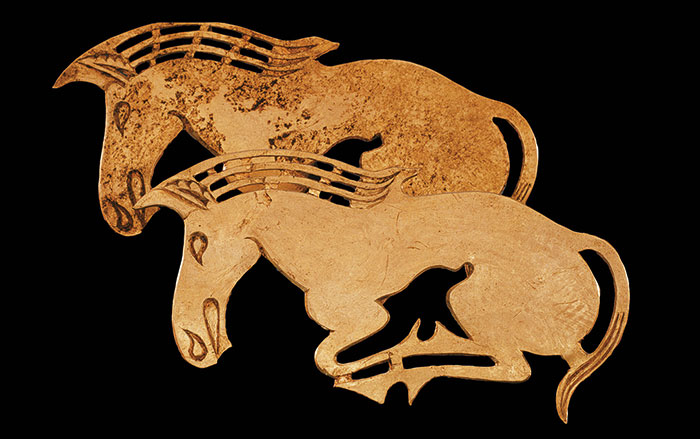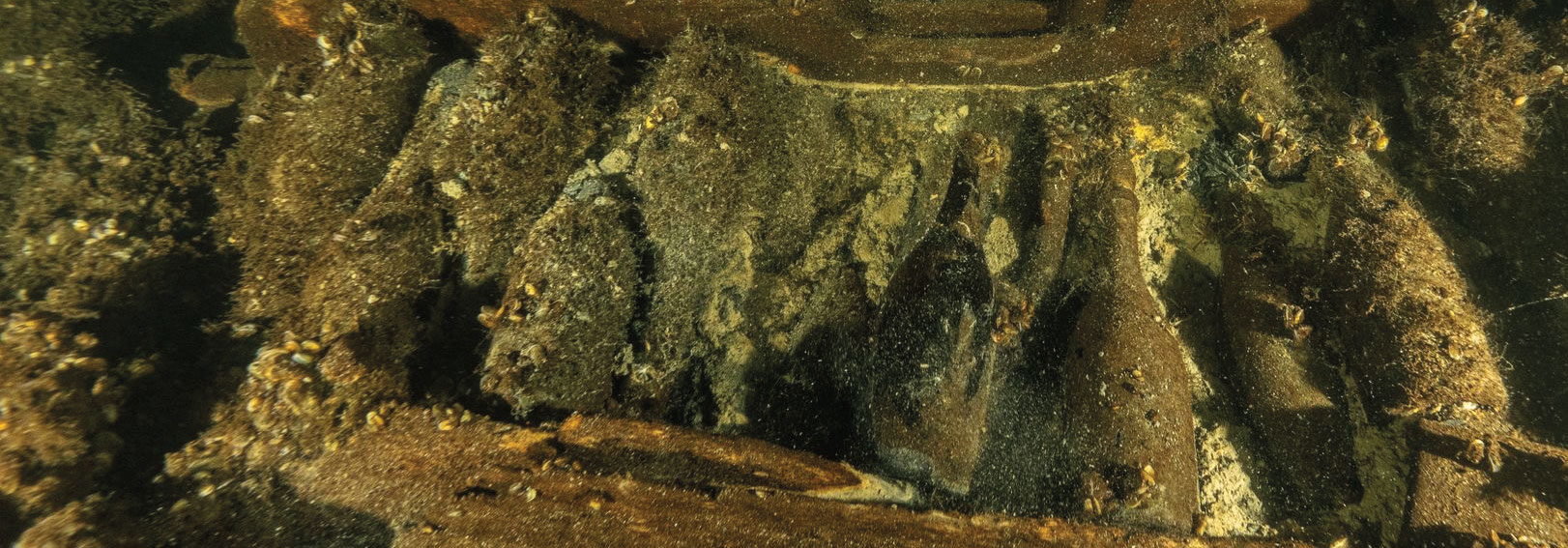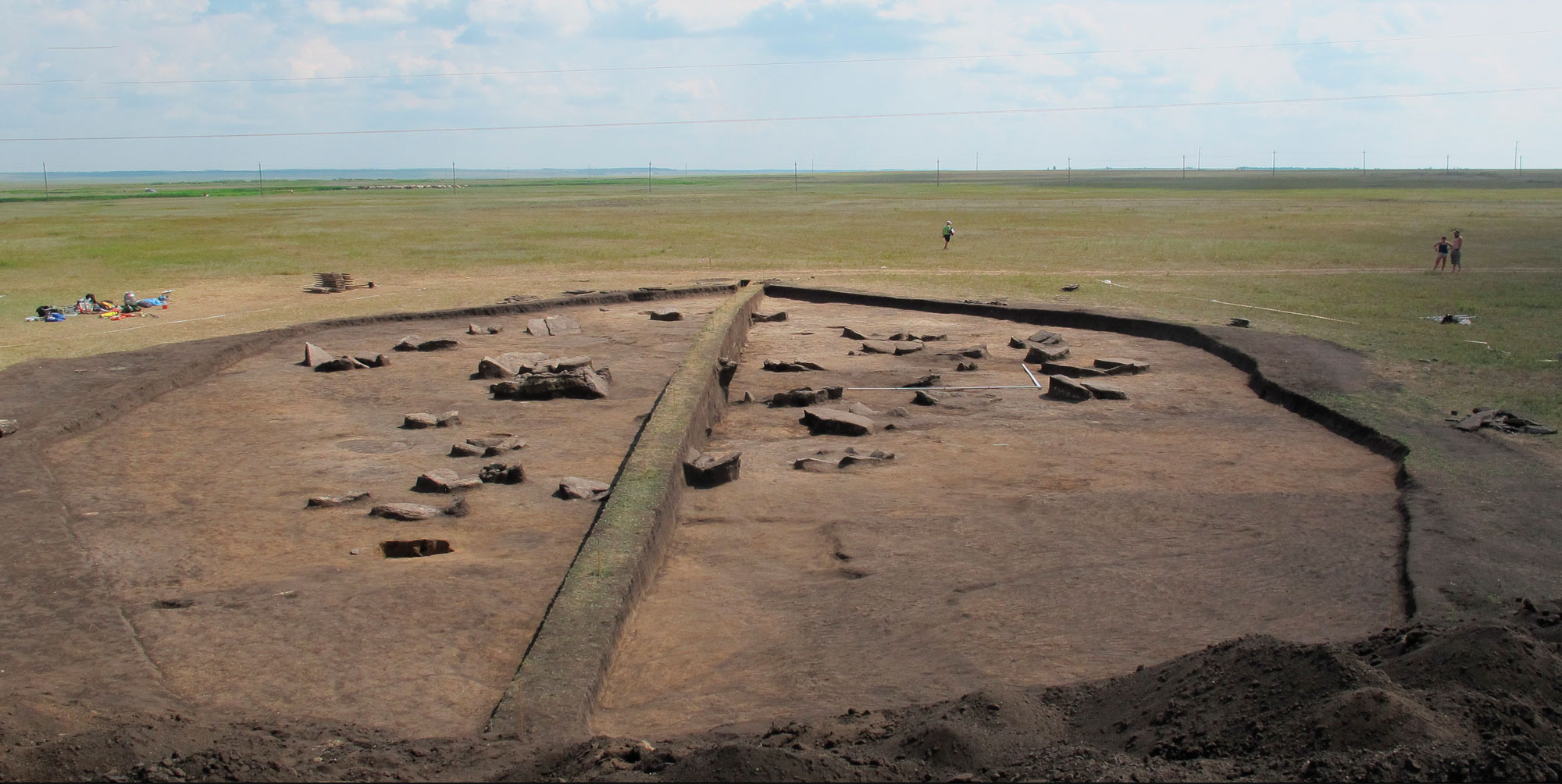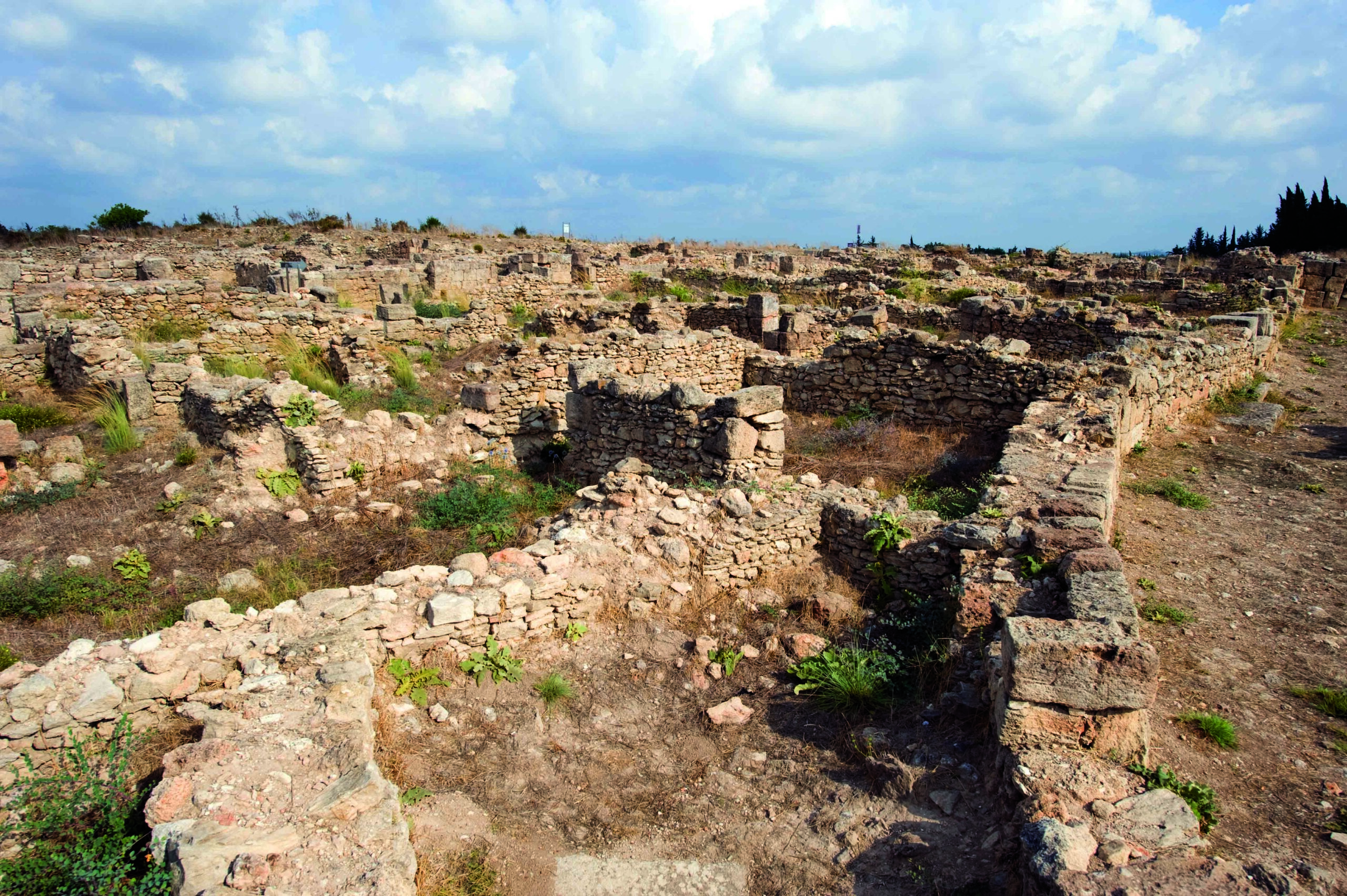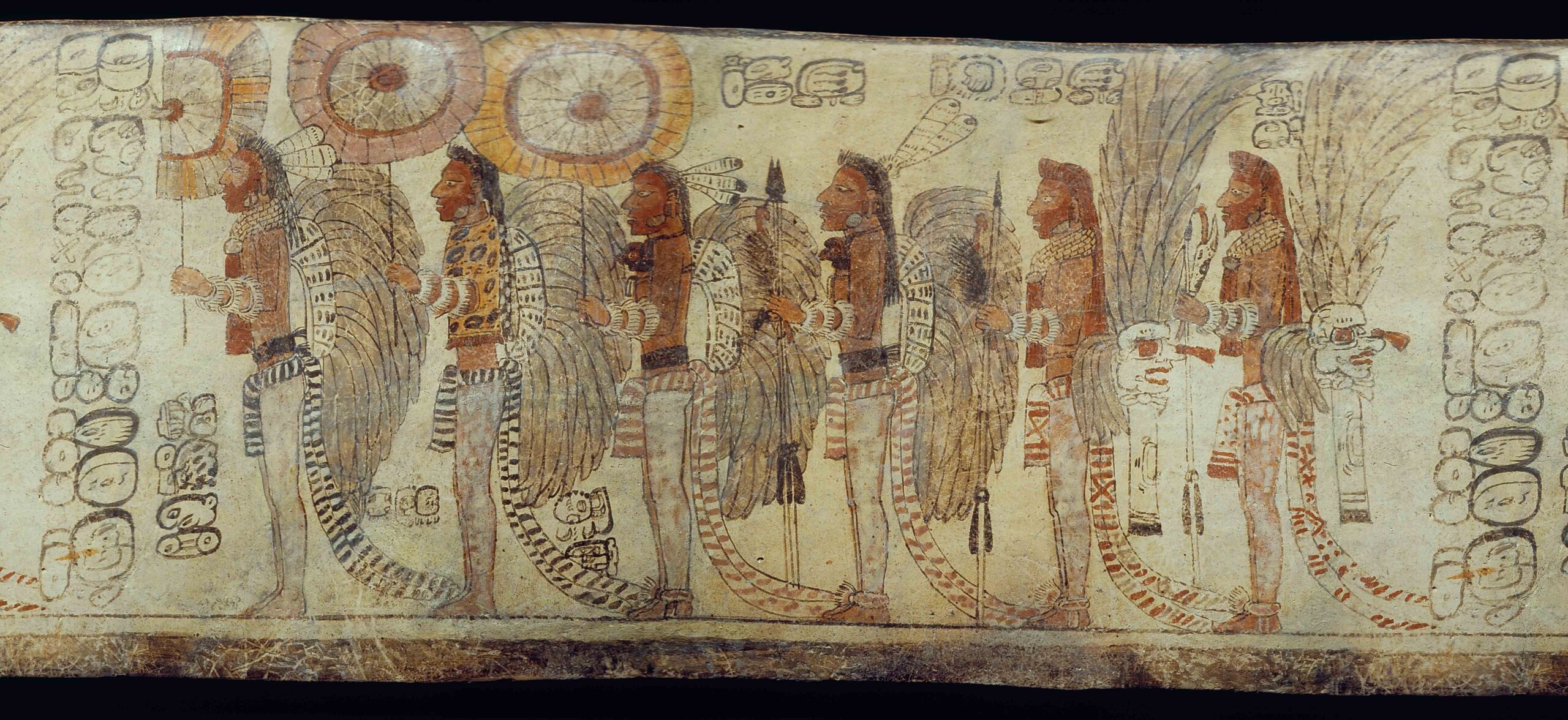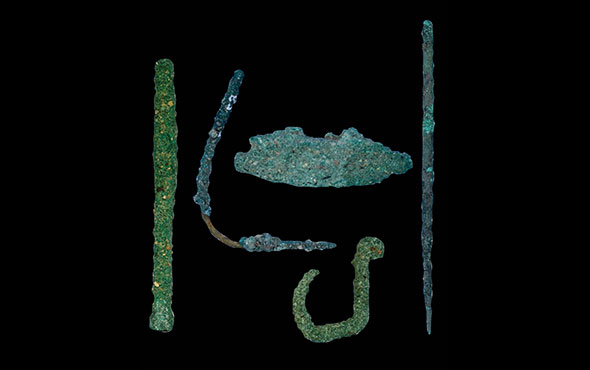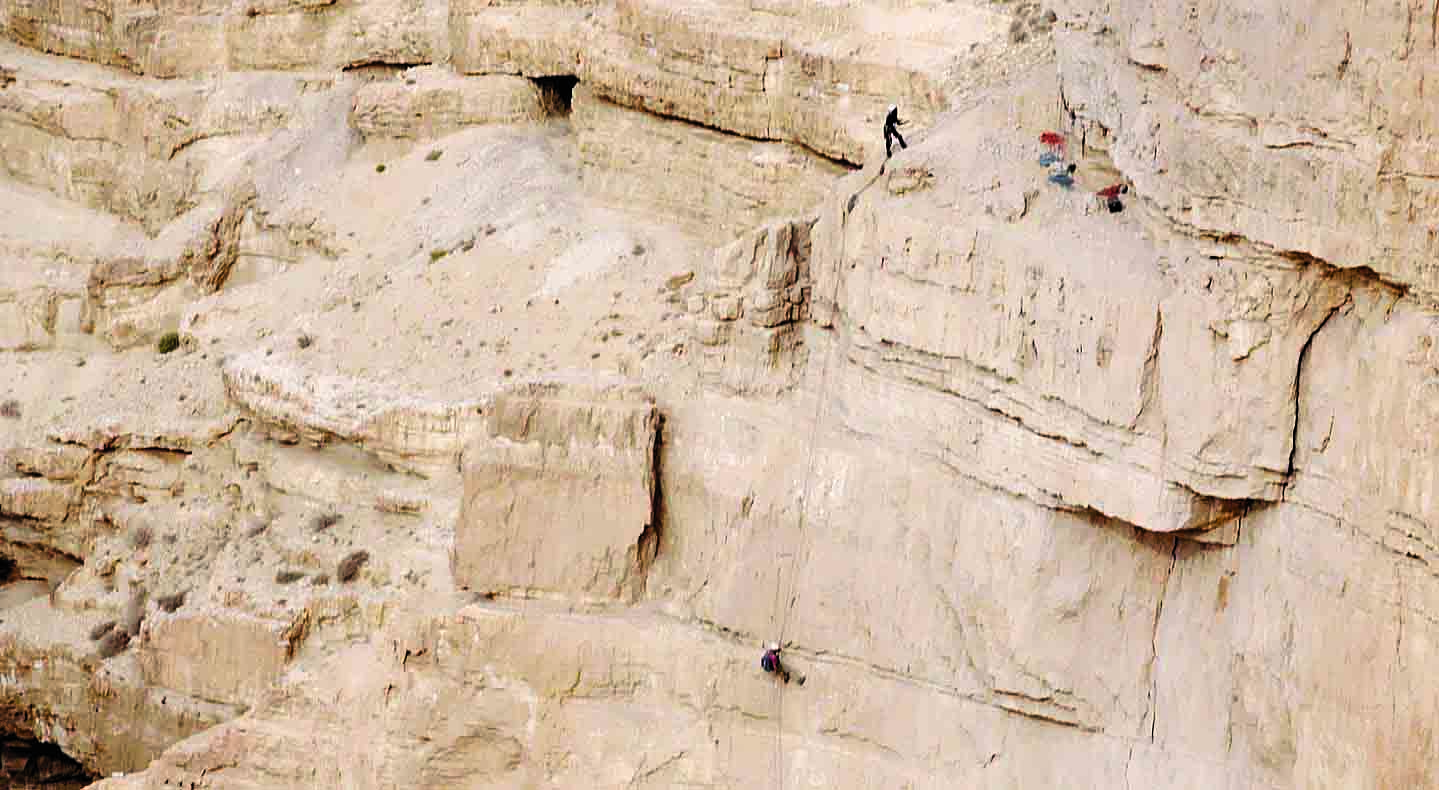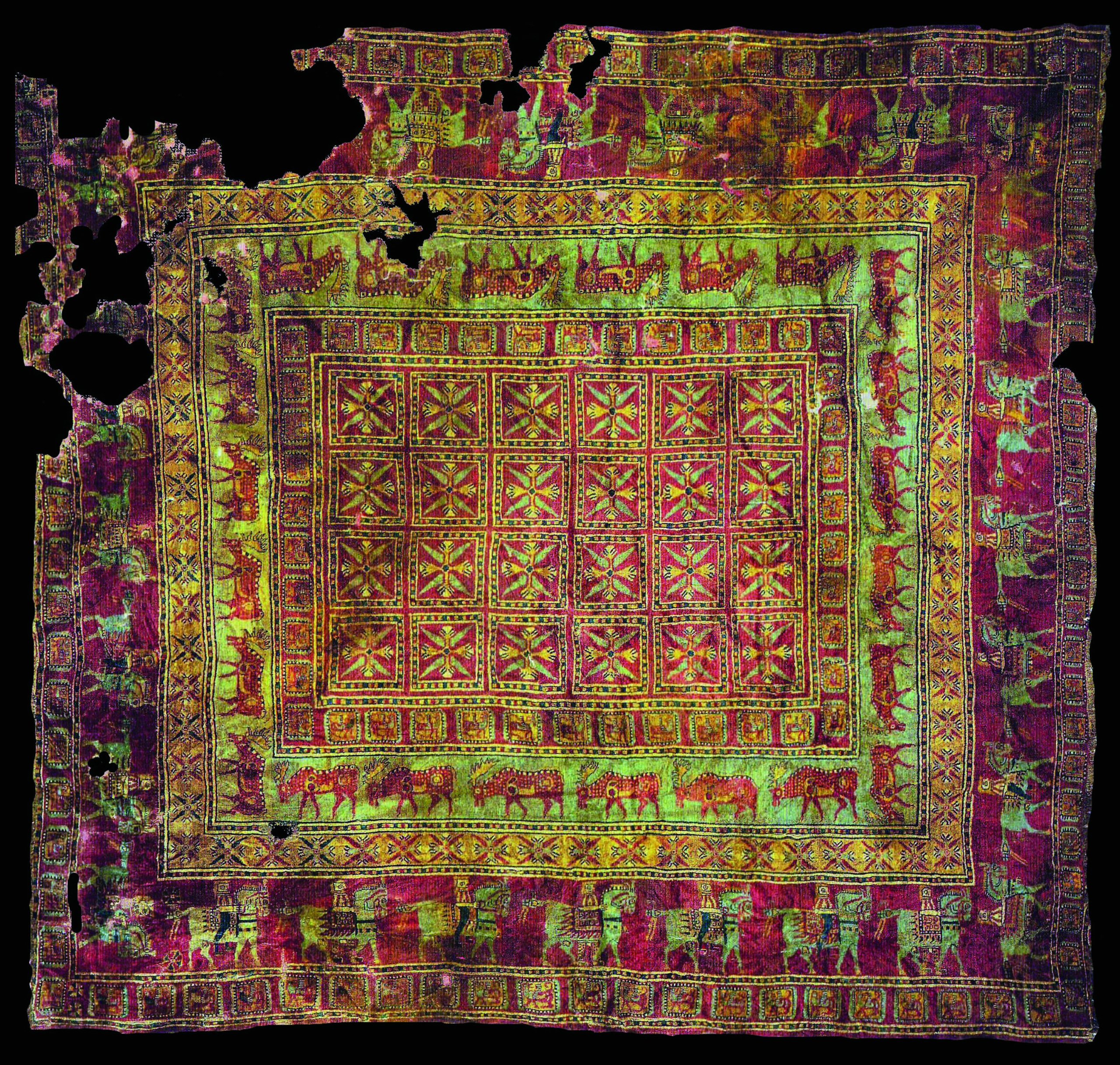
A member of the Pazyryk culture, a nomadic Scythian people who once roamed the mountainous terrain where present-day Russia, Kazakhstan, and Mongolia meet, was buried nearly 2,500 years ago with a textile featuring a rich tableau of lotus buds, deer, and cross-shaped figures. The textile, which measures roughly six feet on a side and was woven with more than 1,250,000 knots, is the world’s oldest known pile carpet. Since it was discovered preserved under a layer of permafrost in 1947, researchers have marveled at the carpet’s enduring hues of yellow, blue, and red.
A team of scientists led by Andreas Späth and Rainer Fink from Germany’s Friedrich-Alexander University Erlangen-Nuremberg recently attempted to figure out how Pazyryk artisans or their trading partners produced such intense colors. They experimented with a method of fermenting wool before dyeing it. “The microorganisms that grow during fermentation eat up fat layers between the cuticle scales in wool fibers,” says Späth. He explains that these fat layers block the diffusion of most natural pigments into the fibers. When the fat layers are gone, that diffusion is strongly enhanced. The team was able to observe this effect using a high-resolution X-ray microscope on both the wool fibers they dyed in their experiment and those from a tiny sample of the Pazyryk carpet, suggesting that the fermentation technique was used to create the carpet’s dazzling colors.




